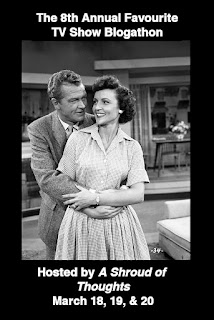CBC's How Do You Solve a Problem Like Maria? is putting the spotlight on homegrown talent. One young lady will win a dream role, but all are receiving welcome exposure to a country-wide audience.
Here in Caftan Woman's corner of the blogosphere I'm going to turn my spotlight on Canadian talent who made their mark in the show business of yesteryear when success for many meant travelling south of the 49th parallel. This is not merely a nostalgic exercise as these talents are garnering 21st century fans discerning enough to exercise their entertainment options.
Here in Caftan Woman's corner of the blogosphere I'm going to turn my spotlight on Canadian talent who made their mark in the show business of yesteryear when success for many meant travelling south of the 49th parallel. This is not merely a nostalgic exercise as these talents are garnering 21st century fans discerning enough to exercise their entertainment options.
Bobby Breen was born November 4, 1927 in Toronto, the son of William Breen, manager of the Royal Alexandra Theatre in the 1930s. Bobby was a naturally talented kid - an outstanding boy soprano who sang in English, French, Italian and Spanish. He received at home training and was managed by his elder sister, Sally, also a singer. From the age of 7 he was appearing on stage and in 1936 made a name for himself on Eddie Cantor's radio program. He was signed by RKO studios that year. Along with an extraordinarily fine voice, young Bobby possessed an assured and pleasant screen personality. No "dead end kid", but no sentimental sap either, though many of his films could be accused of leaning toward the schmaltzy side.
Until recently I had only heard Bobby on record/radio, but thanks to the miracle of DVDs and Turner Classic Movies I've been able to see and enjoy his entertaining features.
Let's Sing Again (1936), co-starred Henry Armetta
Rainbow on the River (1937), co-starred May Robson and Charles Butterworth
Make a Wish (1937), co-starred Basil Rathbone, Donald Meek and received an Oscar nomination for Best Score for Hugo Riesenfeld
Hawaii Calls (1936), co-starred Ned Sparks
Breaking the Ice (1938), co-starred Charle Ruggles and Victor Young was nominated for the Best Score Oscar
Fisherman's Wharf (1939), co-starred Leo Carrillo and Lee Patrick
Way Down South (1939), co-starred Clarence Muse and Alan Mowbray and, once again, Victor Young was up for the Best Score Oscar
Escape to Paradise (1939), co-starred Kent Taylor with "paradise" being the South American setting
Johnny Doughboy (1942), was a Jane Withers movie that featured child actors at that awkward age who had outgrown their usefulness to the studios including Breen, "Alfalfa" Switzer and Baby Sandy.
This link is to a performance from 1939s Way Down South. Bobby solos with the legendary Hall Johnson Choir. On the platform with 12-year-old Bobby is Clarence Muse - actor, writer, producer, director, compose and lawyer, who co-write this film with Langston Hughes.
http://www.youtube.com/watch?v=HGMZ1dN7eT8
When Bobby's film career faded, he attended UCLA then continued to tour and record as a vocalist. He was also guest pianist for the NBC Symphony Orchestra and in his later years ran a talent agency. The latest information I can find is that the 80 year old Breen and his wife, Audrey, are enjoying retirement in Florida and those who have met him speak of a "cool guy" and a "nice gentleman".
How about a spot on Canada's Walk of Fame for Bobby Breen? Perhaps a spot could be found by the Royal Alex where his dad worked in administration from 1910 - 1939.






Bobby Breen- Who knew?
ReplyDeleteWell, you did CW, and now we know too.
Thanks! Wish we had an in at Mirvish. Do you know anyone who works there?
Miss McCrocodile
Cool info, Caftan Woman. What can you tell me about Giselle MacKenzie?
ReplyDeleteWell, novabreeze, I'm saving Giselle for Part III!
ReplyDelete3D644DB5DF
ReplyDeletekiralık hacker
hacker arıyorum
belek
kadriye
serik